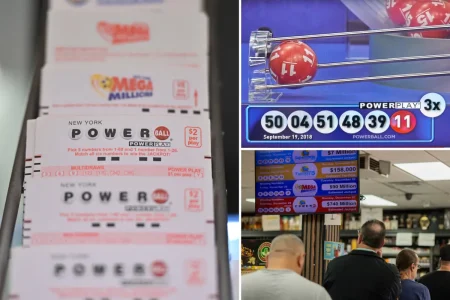The Evolution of Christmas Wishlists: From Paper to PowerPoint
Christmas wishlists have undergone a remarkable transformation in the digital age, moving from the simple joys of circling toys in catalogs to sophisticated digital presentations. This evolution reflects not just changing technology, but shifting family dynamics and expectations around the holiday season.
The nostalgic Christmas lists of yesteryear hold a special place in many adults’ memories. For previous generations, creating a Christmas wishlist was a tangible, sensory experience that marked the beginning of the holiday season. Children would eagerly flip through glossy catalogs, circling desired toys with markers, or embark on special shopping trips with parents to identify potential gifts. Some would carefully craft handwritten letters addressed to the North Pole, complete with polite requests and promises of good behavior. These traditions weren’t just about identifying desired gifts—they were memory-making rituals that built anticipation and connected generations through shared experiences.
In stark contrast, today’s digital natives have reimagined the Christmas list with impressive technological savvy. Australian mom Nat recently highlighted this phenomenon on TikTok, describing her daughter’s approach: a comprehensive PowerPoint presentation complete with star ratings, pre-filled shopping carts sorted by price ranges, and detailed product comparisons. This elaborate digital approach has resonated with many parents across social media, who report receiving everything from Google slideshows to WhatsApp messages with product links, pros and cons lists, and detailed specifications. These digital wishlists represent a generation comfortable with technology as a communication tool, applying presentation skills they may have learned in school to the personal realm of holiday gift requests.
The reactions from parents to these high-tech wishlists reveal mixed emotions about this cultural shift. Some parents express amusement tinged with exasperation at the elaborate nature of these presentations, seeing them as emblematic of a generation accustomed to digital organization and consumer research. There’s a sense of astonishment at children applying what could be considered professional skills to something as personal as a Christmas list. Others appreciate the clarity these detailed presentations provide, eliminating guesswork and ensuring gift satisfaction. The precision of these lists—some organized by price point, priority, or even with backup options—shows children adapting adult consumer behaviors and digital literacy to their holiday wishes.
Interestingly, not all families are experiencing this digital transformation. Many parents in the online discussion expressed envy toward those receiving detailed lists, sharing their frustration with children who respond with vague answers like “I don’t know” or “You know what I like” when asked about gift preferences. This contrast highlights how the digital evolution of wishlists isn’t universal, with many families still struggling with the age-old challenge of determining appropriate and desired gifts. Some parents of boys noted particular difficulty in getting concrete suggestions, suggesting possible gender differences in communication styles around gift preferences, though individual personality likely plays a larger role than gender alone.
While much has changed in how children communicate their Christmas wishes, the underlying dynamics remain remarkably consistent across generations. Children still experience the anticipation and hope associated with Christmas gifts, and parents still desire to fulfill wishes within their means while creating meaningful holiday experiences. The evolution from paper lists to PowerPoint presentations reflects our broader cultural shift toward digital communication, but doesn’t diminish the fundamental emotional connection of gift-giving. Perhaps these modern wishlists, with their detailed specifications and organized presentations, actually serve to strengthen family communication around gifts—providing clarity that helps parents navigate the increasingly complex consumer landscape while allowing children to exercise growing digital literacy skills. Rather than lamenting the loss of traditional methods, we might recognize this evolution as children adapting timeless traditions to contemporary tools, preserving the essence of Christmas wishlist magic while expressing it through the language of their generation.















